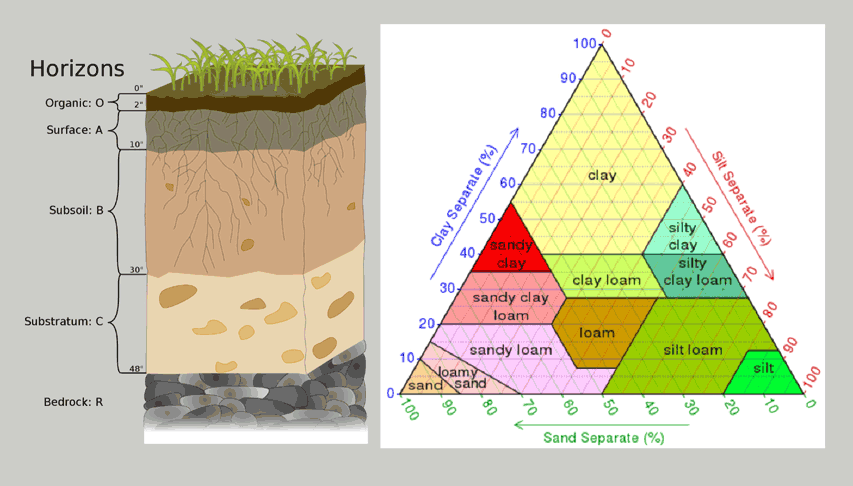November 22, 2022
Loamy Earth

This blog serves a specific purpose, the most important being the generative formation of titles for my art works.
Here's an example: "The Best of All Foxes".
When I blog a lot, the field is rich with possibility. When I blog less, the title machine survives like the fabled way cockroaches can feed on a fingerprint. The species Blattodea are known to be great survivors.
I used to to refer to the blog as the place where I go to to divine titles. Divine as in dowsing. From the dictionary, to the verb divine: to discover (something) by guesswork or intuition, to have supernatural or magical insight into (future events), and to discover by dowsing.
I accept all three definitions.
Let's add another verb in the process for naming art works via this weblog: to grow.
Think: truffles.
The blog as an agricultural field.
There are different types of earth.
Breakdown:
- Components: Sand, Clay Silt, Humus
- Sand: Sand is pulverized rock, it characteristically drains water easily
- Clay: Clay is characterized by its plasticity when wet and hardness when dry. Clay is composed of aluminum and silicon plates mechanically connected by interconnecting oxygen and hydroxide atoms that are flexible when wet and inflexible when dry.
- Silt: Silt is pulverized quartz, it has "a floury feel", meaning that it tends to fluff up, it can create space for air...
- Humus: Organic matter, disintegrating for latter integration. Cycles of life and death. Ladders of being.
Not hummus, humus. The blog-as-hummus is a possible topic for another day.
Snips from Wikipedia:
Humification:
Organic matter is humified by a combination of saprotrophic fungi, bacteria, microbes and animals such as earthworms, nematodes, protozoa, and arthropods.Plant remains, including those that animals digested and excreted, contain organic compounds: sugars, starches, proteins, carbohydrates, lignins, waxes, resins, and organic acids.
Decay in the soil begins with the decomposition of sugars and starches from carbohydrates, which decompose easily as detritivores initially invade the dead plant organs, while the remaining cellulose and lignin decompose more slowly.
Simple proteins, organic acids, starches, and sugars decompose rapidly, while crude proteins, fats, waxes, and resins remain relatively unchanged for longer periods of time.
Lignin, which is quickly transformed by white-rot fungi, is one of the primary precursors of humus, together with by-products of microbial and animalactivity.
The humus produced by humification is thus a mixture of compounds and complex biological chemicals of plant, animal, or microbial origin that has many functions and benefits in soil.
Some judge earthworm humus (vermicompost) to be the optimal organic manure.
Think of this post as a collection of notes for a future essay (whose likelihood of being written diminish with every day, by the way).
The bill of hard but promisingly fruitful work: correlate the various aspects of general blog content to the elements of soil snipped above.
Posted by Dennis at November 22, 2022 9:13 AM
Leave a comment